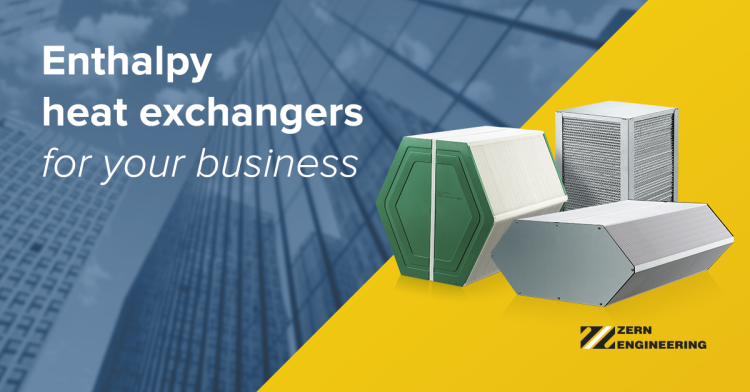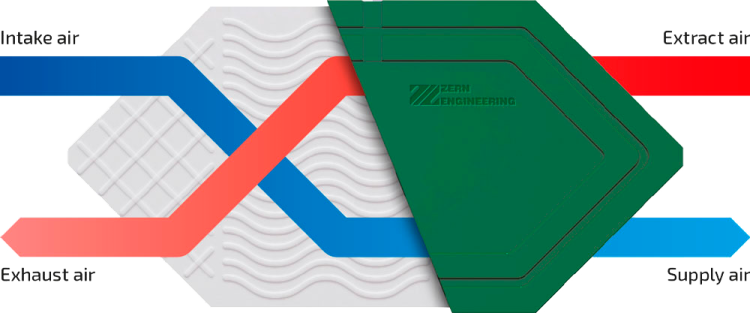| Enthalpy heat exchangers for your business |

Air-to-air enthalpy plate heat exchangers – smart ventilation with real savings♻️

• 🏢 Office ventilation systems
• 🏠 Residential energy recovery units
• 🏭 Industrial and process air recovery
• 🏫 Schools, libraries, and public buildings
• 🩺 Administrative areas in healthcare facilities*
*⚠️ Note: Enthalpy exchangers are suitable for general-use zones in hospitals (like lobbies or offices), but not for sterile spaces (ICUs, ORs), due to minimal but unavoidable air crossover.
So how much does it actually save?
Let’s take a realistic case — a ZERN ENGINEERING enthalpy unit handling 600 m³/h, running 12 hours a day, all year.
🌨️ Winter:
• Outdoor air: –5 °C → Indoor setpoint: +20 °C
• Recovery: up to 70% of heat from exhaust air
• Savings: ~10–12 kWh/day, totaling 1,500–1,800 kWh over the season
• ~€300–360 saved on heating
☀️ Summer:
• Outdoor air: +30 °C, 60% RH → Indoor setpoint: +22 °C, 45% RH
• Recovery: precooling + dehumidification (~4–5 kWh/day)
• Seasonal savings: ~500–600 kWh
• ~€100–120 off cooling and drying costs
🧾 Annual savings: €400–480 per unit, plus softer indoor climate and reduced HVAC wear.
Now apply that to a network of small retail spaces, classrooms, or hotel corridors — and you’re looking at thousands in savings, with zero moving parts to service.
Why ZERN ENGINEERING?
Our enthalpy plate heat exchangers aren’t just efficient — they’re engineered for real-life demands:
• 🔁 Dual energy recovery — both sensible and latent heat transfer in one compact unit
• 🧫 Antibacterial & mold-resistant membrane — does not support mold growth and blocks microorganisms
• 📐 Universal fit — standardized module sizes compatible with most ERV/HRV units
• 🔄 Easy retrofit and replacement — drop-in compatible with existing ventilation systems
• 🧱 Rigid, sealed frame construction — ensures high air tightness and minimal leakage
• 🛠️ No consumables, no moving parts — durable and low-maintenance
• 🌍 Built for harsh climates — works reliably in both cold and humid conditions
As energy prices rise and climate expectations grow, integrating heat and humidity recovery into your ventilation system isn’t a luxury — it’s common sense. If you’re designing smarter buildings, it starts with smarter air exchange.

